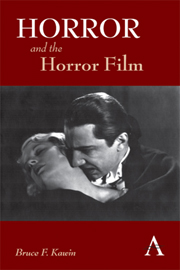8 - Horror Documentary
from Part III - Related Genres
Summary
Beyond comedy, there is another situation in which horror seems to have no boundaries and threatens to become infinite: when the horror is real. Our feelings about real horror can be boundless while we are in its grip. There is no consigning the evil to fiction. There is no beauty, no transfiguring or metaphoric imagery, no fantasy. Horror documentaries do not set out to entertain, but they are relevant to the genre in that they attempt to present horror on film. They often accomplish this without imposing a resolution on the material, especially where events have not provided one, leaving the horror open. To consider the documentary is vital to a complete view of the relations between horror and the horror film.
Death on Camera
The World War II documentary Nuremberg: Its Lesson for Today (Pare Lorentz, 1946, US) includes authentic footage taken inside a working gas chamber, and we see people die on camera, especially one man. Nuremberg, which contains some of the footage that was used in evidence at the Nuremberg trials, was supposed to have been shown widely after the war to educate people about the kind of evil the Allies had been fighting, but it was finally deemed too horrific for that and was released only in Germany. In the United States it was banned for 40 years. Some of the captured German footage it used, notably of Jews being thrown into a mass grave, appeared in later documentaries including Night and Fog.
- Type
- Chapter
- Information
- Horror and the Horror Film , pp. 204 - 208Publisher: Anthem PressPrint publication year: 2012



